Choosing kitchen knives means giving a lot more thought to your purchase than the brand name. All popular knife makers have a low-end model and a high-end model, so name alone won’t help you. There are three things to consider when buying this kitchen tool that you’ll spend the majority of your prep time with because the knife will probably last longer than you do.
The first item to consider is the TYPE of metal the knife is made from. Kitchen knives are generally made from one of three types of metals:
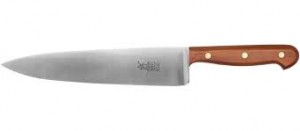 Carbon Steel – A carbon steel knife is the least expensive you can find. It’s a soft, flexible material that will allow for easy sharpening. However, if it’s soft enough to be easily sharpened, it can lose it’s edge quickly also. This type of knife can rust, it can pit and corrode.
Carbon Steel – A carbon steel knife is the least expensive you can find. It’s a soft, flexible material that will allow for easy sharpening. However, if it’s soft enough to be easily sharpened, it can lose it’s edge quickly also. This type of knife can rust, it can pit and corrode.
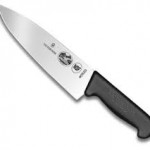 Stainless Steel – In cost, this is the middle-range knife. Stainless steel is a much harder substance, so this knife is not as flexible, is more difficult to sharpen, but holds it edge longer as well. This type of knife will not rust, pit or corrode.
Stainless Steel – In cost, this is the middle-range knife. Stainless steel is a much harder substance, so this knife is not as flexible, is more difficult to sharpen, but holds it edge longer as well. This type of knife will not rust, pit or corrode.
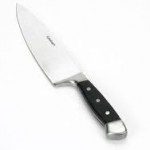 High Carbon Stainless Steel – Only in the last few decades have we developed the best combination of all. This type of knife is soft enough to sharpen, but hard enough to retain its edge. It won’t rust, won’t pit, won’t corrode, but is the most expensive knife of all.
High Carbon Stainless Steel – Only in the last few decades have we developed the best combination of all. This type of knife is soft enough to sharpen, but hard enough to retain its edge. It won’t rust, won’t pit, won’t corrode, but is the most expensive knife of all.
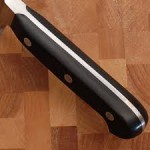 The second thing to consider when choosing kitchen knives is the construction of the knife. Generally, a knife made of ONE piece of metal is better. This piece of metal should extend from the tip of the knife to the bottom of the handle. If you can look at the handle of your knife and see the metal extending through the handle, it’s of better construction. It will usually have a handle with two pieces that are riveted together.
The second thing to consider when choosing kitchen knives is the construction of the knife. Generally, a knife made of ONE piece of metal is better. This piece of metal should extend from the tip of the knife to the bottom of the handle. If you can look at the handle of your knife and see the metal extending through the handle, it’s of better construction. It will usually have a handle with two pieces that are riveted together.
Lastly, the knife has to feel good to you. I had a petite woman in one of my cooking classes who purchased a new knife to show me. The woman was barely 4 foot 10, but her knife was a 14 inch machete! “Is this a good knife, Chef?” she asked. “If you’re 6 foot 4,” I responded.
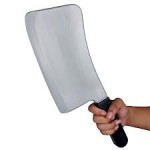 You should choose a kitchen knife that feels good in your hand, one that is well balanced and easy for you to use. If you’re a petite woman of less than 5 feet, you should have a 7 inch knife with a short handle. That 14 inch knife is better used by someone who is taller because of the difference in leverage they’ll have.
You should choose a kitchen knife that feels good in your hand, one that is well balanced and easy for you to use. If you’re a petite woman of less than 5 feet, you should have a 7 inch knife with a short handle. That 14 inch knife is better used by someone who is taller because of the difference in leverage they’ll have.
You don’t need 24 steak knives! My best advice is to avoid the combination sets of butcher-block knives and purchase each of the 4 knives you need in your kitchen separately. Nobody makes steak for 24 people. Purpose that money to better quality purchases for the knives you’ll use most often.
The Only 4 Knives You Need In Your Kitchen:
1) Chef’s Knife – This is the tapered knife that is wider at the heel than the tip. It will be used for 75 percent of your kitchen tasks. It’s used in a “tip/fulcrum” method where the tip stays on the cutting board and the knife rocks in a choo-choo train fashion.
2) Boning Knife – This is the knife used ONLY on raw products. It’s used in a full-stroke swiping fashion to cut fat from chicken, clean sinew from beef, and portion raw meats.
3) Slicing Knife – A serrated slicing knife can handle the softer items that the chefs knife would crush. The teeth of this knife cut into soft items without much downward pressure. The blade is drawn toward the user in one long stroke.
4) Paring Knife – The smallest of the kitchen knives is used for close-up work on fruits and vegetables. It’s the only kitchen knife used with the sharp edge facing us. It’s held in a choke grip and items are pushed past the blade with your thumb.
When choosing kitchen knives, don’t choose the brand name you’re most comfortable with. You’re probably paying more for advertising than a knife at that point. Find a knife that fits your budget, is made of the best materials, and buy only the knives that you’ll actually need for your kitchen.
That being said, I also have a clam knife, an oyster knife, and a pizza knife in my kitchen drawers. What other knives do you think are absolutely necessary for the kitchen? Please comment below with your ideas.
Knife Skills, Basic Cooking Methods, Using Herbs and so much more in my cooking DVDs!
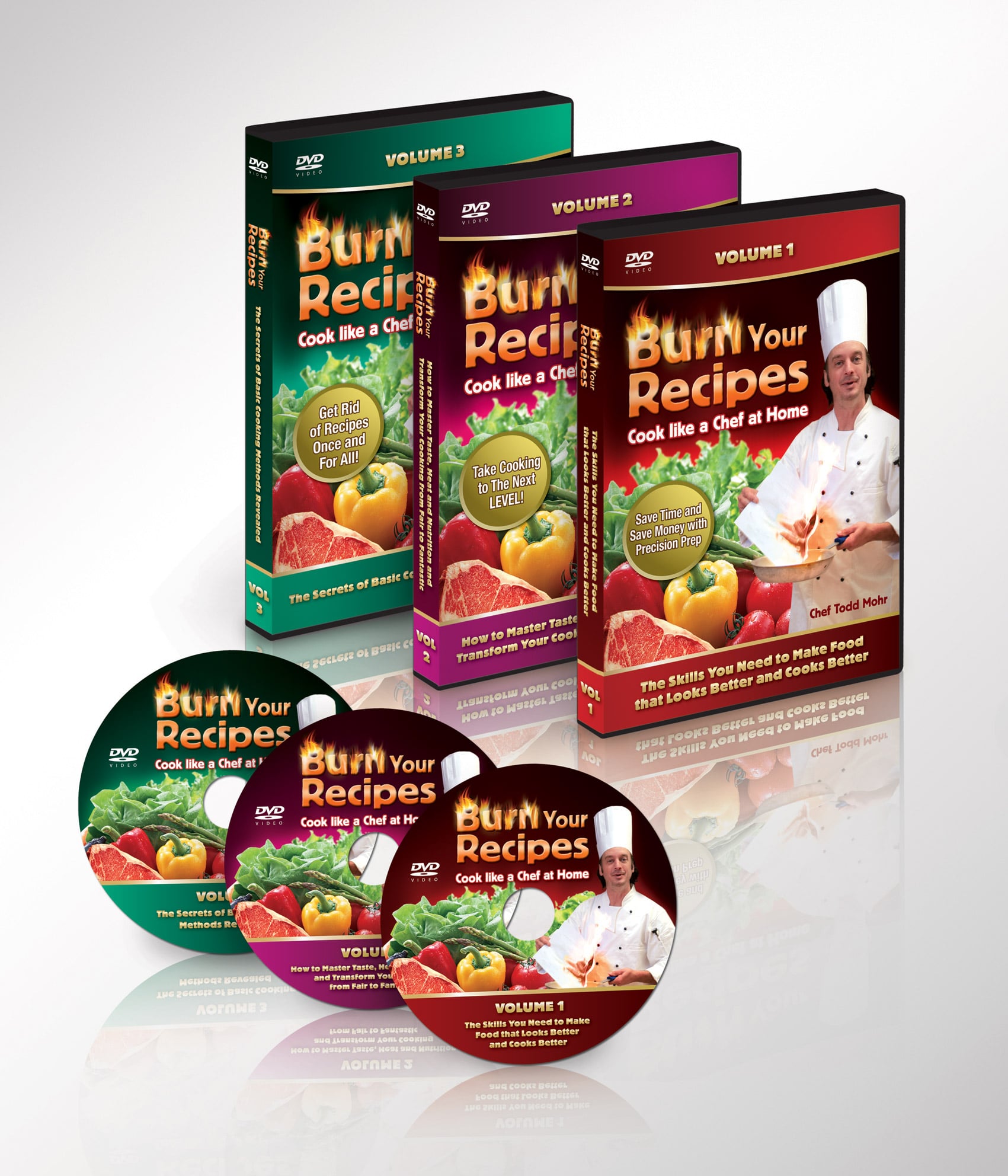
The Complete cooking DVDcollection for cooking without recipes.
